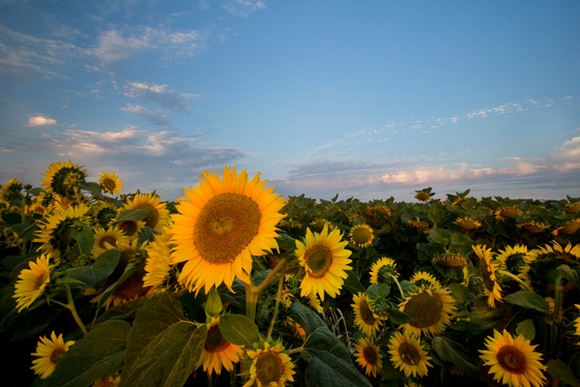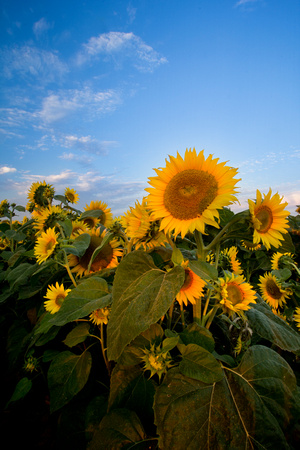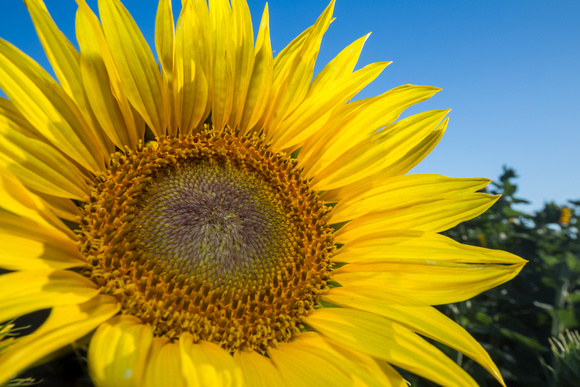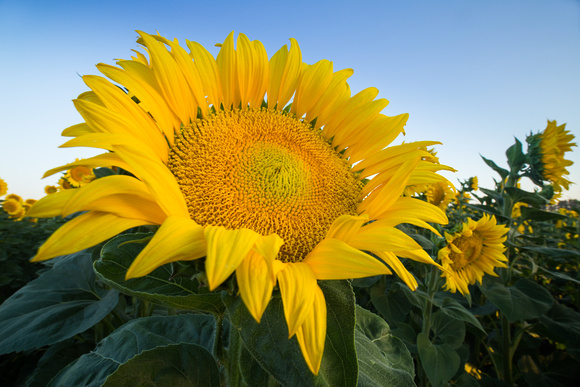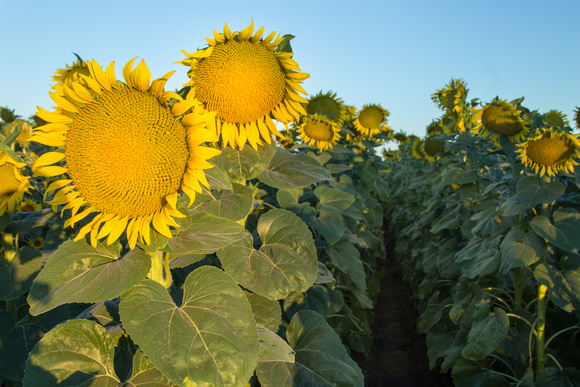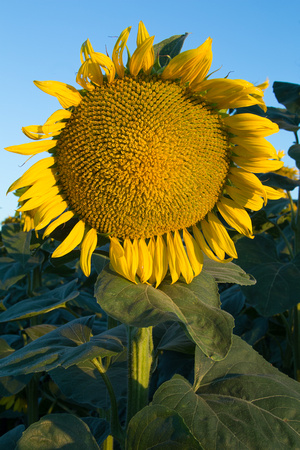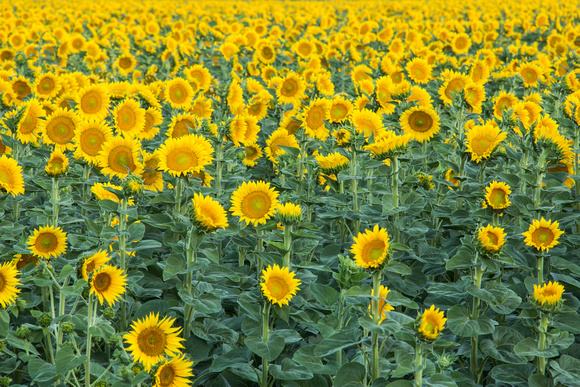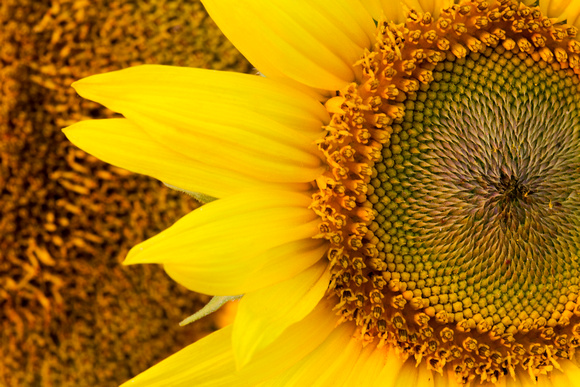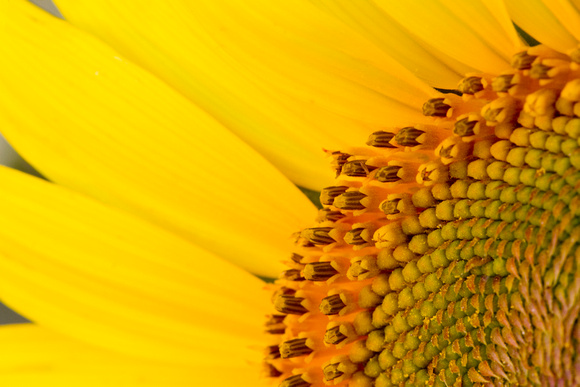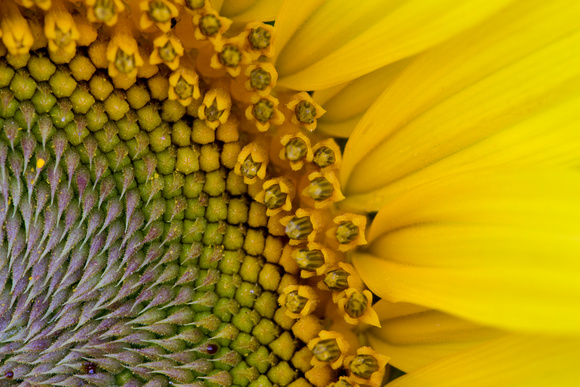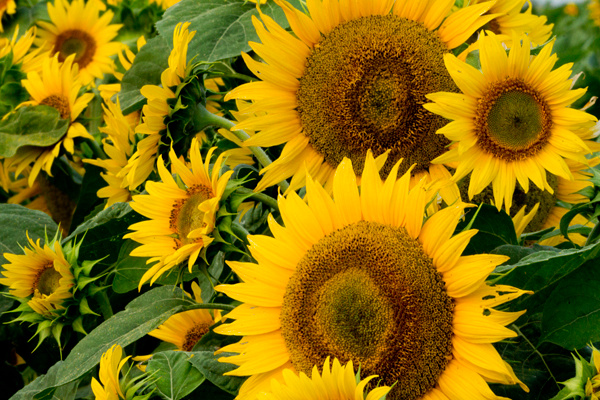How To: Focal lengths and when to use each
Chances are, if you own a camera, you have more than one lens or a zoom lens that covers various focal lengths. There are three main categories of focal lengths and each is characterized by how much of the scene you can capture and how large the subject will be in the frame. Shorter focal lengths, also known as wide angle lenses typically range from 14-35 mm, and have a wide angle of view with smaller magnification. Standard focal lengths range from 35 - 70 mm and have an angle of view and magnification much like the human eye sees. Longer focal lengths, also known as telephoto (and super telephoto) lenses typically start at 70mm and go up from there. These lenses have a more narrow angle of view and higher magnification. Each focal length has it's value and can be used to accomplish different results.
I've decided to use some photos I took during a recent visit to a sunflower field in Dixon, California, to illustrate different focal lengths. Sunflowers bloom here in July-August so this is a great time to get out and see them. If you do, please respect the property and sunflowers. I saw lots of footprints and trampled plants on my last visit and it's totally possible to get great pictures without destroying the beautiful flowers.
Wide Angle: 14 – 35 mm / Wide angle of view / Lower magnification
Wide angle lenses are a good choice for landscape photography because you can capture more in the scene than you would with a longer lens.
Because of the wide angle of view, lines near the edges of the frame can also have a curved appearance. If you don't want this, you can increase the distance between the camera and the subject and/or by adjusting the angle of the lens to the subject (slightly tilting up or down). You may also want a curved appearance to accentuate something in the frame.
These lenses also tend to have perspective distortion that can make objects in the foreground appear larger than objects in the background, even when background objects are much larger when viewed in person. This can be exaggerated by moving closer to the foreground subject. Perspective distortion can be used as a compositional tool to draw more attention to the subject(s) in the foreground. This can make for a more dramatic image but it is important to have a strong foreground element that will hold the viewers attention.
One type of extreme wide angle lens is known as a fisheye lens. These can be a lot of fun when you are looking for super-curved, super wide angle shots. I'll cover fisheye lenses in detail in a future post.
Standard: 40 - 60 mm / Angle of view is close to what the human eye sees / Magnification is close to what the human eye sees
Standard lenses are great for landscapes, flowers, portraits, etc. They work best for subjects that are close to medium distance.
These lenses capture what the human eye sees so they are good starter lenses as well.
Telephoto (and super telephoto): 70 - 200 mm+ / Narrow angle of view / High magnification
Telephoto lenses are great for when you want to get close to a distant object, or if you want to give yourself some distance from that object (like a wild animal). If you want to fill the frame with a specific subject or crop out unwanted elements, a telephoto can help achieve this.
Using longer focal length lenses can accentuate compression or flattening of subjects in our photos. This compression will make background elements appear larger than they are. This is a type of distortion since the background elements appear closer to the subject and larger than they are in real life. If you are looking to achieve this look in your photos, move the camera farther away from the subject. While you are increasing the distance from the camera to the subject, the distance from the subject to the background will not change and this will result in the compression or flattening effect.
Macro: Wide to telephoto mm / Angle of view varies with focal length / Magnification is 1:1 or higher
I'm including macro in this post because, even though it is not it's own focal length, it is a lens type that is used for specific results. You can often achieve similar results with a telephoto lens but a macro lens tends to offer improved quality when shooting macro subjects. According to Macro photography for dummies, "Macro photography means creating an image in which the subject is depicted on the digital sensor (or film plane) in its actual size." That means it has a magnification ratio of 1:1, and if you printed an image the same size as your digital sensor, the subject would appear life-size.
Macro lenses are a different breed from the standard focal lengths described above and can actually range in their focal lengths depending on your photographic interests. I find the longer focal lengths allow you a little more breathing room bwteen you and the subject which can make lighting easier. Plus, I don't want to get that close to bees!
Each focal length has it's strengths and weaknesses. Knowing when and how to use each for the composition you are trying to achieve will improve your photographic results. Now get out and shoot!



